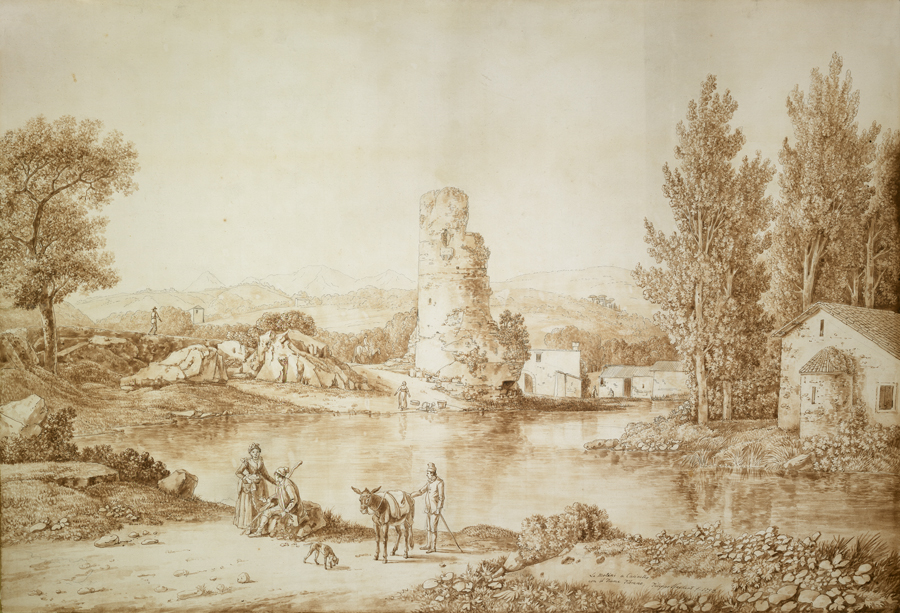Loading the page ...
Jakob Philipp Hackert
(1737 Prenzlau – 1807 San Piero di Careggio)
Watermills on the River Fibreno ("Le Molini a Carinello con il Fiume Fibreno"). Pen and brown ink over pencil, brown wash. 57 x 81 cm. Signed and dated: Filippo Hackert f. 1793. Nordhoff 871.
Jakob Philipp Hackert, the landscape painter par excellence of Goethe’s day, made a name for himself shortly after moving to Rome in 1768. His stay in the Eternal City lasted a total of eighteen years, during which time Hackert achieved considerable international fame. A clear indication of his huge success may be seen in the ever longer "delivery times" for his works, which were ordered not only by travellers on the Grand Tour, but also by European princely houses. In March 1786, Hackert was appointed court painter by King Ferdinand IV of Naples – one of the last absolute rulers of the epoch – and he moved to the south Italian capital that very summer. His contract contained a provision that the artist was to be relieved of his duties for three months every year so that he might explore the landscapes of his adopted country and thus find inspiration and motifs for his paintings (see Wolfgang Krönig/Reinhard Wegner, Jakob Philipp Hackert. Der Landschaftsmaler der Goethezeit, Cologne-Weimar-Vienna 1994, pp. 153–162). It was in Naples too, in the spring of 1787, that Hackert had his first, momentous encounter with Johann Wolfgang von Goethe. The great man of letters was to remain a lifelong friend, writing the first biography of Hackert’s life after the painter’s death in 1807.
Hackert himself was a tireless traveller. As early as 1769, shortly after his arrival in Rome, he was joined by Johann Gottlieb, Johan Tobias Sergel and Antoine François Gallet on his first journey on foot through the Alban Hills and to Frascati and Grottaferrata. Countless other expeditions were to follow, which took him to such lesser known regions of Italy as Latium, the Abruzzi and the Marche. The place names and dates on many of his drawings convey an accurate and vivid picture of his assiduous travels.
The present large-format sheet is a very characteristic example of the type of landscape drawing produced in the course of these extended reconnaissance trips. In the spring of 1793 Hackert had gone on a hike through the regions of Lazio and Abruzzo, which took him to such places as Isola di Sora, Anitrella and Cassino. The composition is arranged on a panoramic scale. In the foreground, on the river bank, a traveller with a donkey stands next to a resting peasant and his wife. An oak and tall poplars at the left and right margins form a compositional counterpoint to the picturesque ruined tower in the centre of the image. The river – the Fibreno, which flows into the Liri just above Isola di Sora – makes a pronounced downward curve, while a watermill can be glimpsed in the background. The whole is treated in a light and varied style. One can see that this is an experienced, almost slick draughtsman at work. The accurate wash achieves striking chiaroscuro effects, each element of the composition is in its right place and contributes to the inner balance of the picture’s structure. To render the broad sweep of the sky Hackert has used only the blank colour of the paper, thus achieving an effective contrast to the detailed drawing of the light-bathed landscape. Entirely in keeping with the nostalgia for Italy in the closing years of the 18th century the draughtsman creates a convincing picture of pastoral bliss and dolce far niente. How intoxicatingly gorgeous and unspoiled must the landscape of the Italian Campagna have been in Goethe’s and Hackert’s day!
